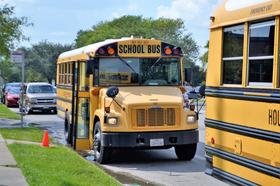Equity and Access in Public Schools: Addressing Disparities in Opportunity
Equity and access in public schools remain central to national conversations about educational fairness, community investment, and long-term student success. As districts confront enrollment shifts, staffing shortages, and widening achievement gaps in 2025, families want to understand how equity and access in public schools directly shape academic outcomes and life opportunities.
This article examines equity and access in public schools across funding, instruction, technology, and student services. It also explores policy challenges and solutions that districts are using to reduce opportunity gaps. Throughout the discussion, we return to one guiding issue: how equity and access in public schools affect every child’s ability to learn, grow, and reach their potential.
Why Equity and Access in Public Schools Matter
Equity and access in public schools ensure that student success is not predetermined by ZIP code, income level, or family background. Instead, all students receive meaningful opportunities to thrive academically and socially.
Families increasingly evaluate districts based on their commitment to equity and access in public schools. They analyze resources such as Public School Review to understand how different systems address disparities in opportunity.
Core components of equity and access in public schools include:
Fair allocation of funding and staffing
High quality curriculum and instruction
Accessible support services for multilingual learners and students with disabilities
Safe and inclusive learning environments
Consistent access to technology, enrichment, and advanced coursework
Districts that invest in equity and access in public schools create stronger academic foundations, more stable communities, and improved student trajectories.
Disparities That Affect Equity and Access in Public Schools
To fully understand equity and access in public schools, it is necessary to recognize the underlying factors that create uneven opportunities.
Funding Inequities
Funding disparities remain one of the most significant challenges to equity and access in public schools. In many regions, property taxes directly affect district budgets. This results in higher spending in affluent areas and limited resources in lower income districts.
These funding gaps influence:
Teacher quality and retention
Class size
Access to advanced coursework
Technology infrastructure
Mental health and counseling services
Uneven funding creates cycles where schools with fewer resources struggle to attract staff and maintain competitive programs, affecting the long-term stability of equity and access in public schools.
Teacher Shortages and Distribution Gaps
In 2025, teacher shortages continue to affect equity and access in public schools. High need schools often experience the highest turnover and struggle to hire certified math, science, and special education teachers.
Consistent research shows that teacher quality is one of the strongest predictors of student achievement. Uneven access to skilled educators therefore compromises equity and access in public schools, especially in rural and urban districts that face chronic staffing challenges.
Technology and Digital Access
The shift toward digital learning has expanded opportunities, but it has also highlighted inequities. Students without reliable devices or broadband face barriers that significantly limit equity and access in public schools.
Districts have made progress through one-to-one device programs and partnerships with local providers, yet the digital divide persists, especially in low income communities.
Access to Rigorous Coursework
Advanced Placement, honors, International Baccalaureate, and dual enrollment courses deepen learning and improve college readiness. However, enrollment in these pathways often differs sharply by race, income, and school size.
When access to rigorous coursework varies, so does access to long-term opportunity. This makes advanced learning one of the defining measures of equity and access in public schools.
For families comparing advanced programs across districts, Public School Review’s top-ranked school lists offer helpful context on course offerings and academic performance.
How Equity and Access in Public Schools Shape Student Outcomes
Equity and access in public schools influence far more than classroom performance. They affect long-term outcomes in higher education, employment, and community health.
Academic Achievement and Readiness
When students receive equitable access to strong instruction, support services, and high quality materials, achievement improves across all demographic groups. Studies consistently show that equity and access in public schools can narrow achievement gaps, increase graduation rates, and improve college readiness.
School Climate and Engagement
Inclusive environments that prioritize equity and access in public schools create stronger relationships between students, teachers, and families. Students who feel valued are more likely to:
Attend school consistently
Engage in class
Participate in extracurricular activities
Seek support when needed
Long-Term Economic Mobility
Equity and access in public schools contribute to regional economic mobility. Communities with strong schools attract investment, produce a more skilled workforce, and experience greater long-term growth.
2025 Developments Influencing Equity and Access in Public Schools
Several current trends are reshaping equity and access in public schools across the United States.
1. Expanded Mental Health Services
Districts are increasing access to counseling, social workers, and mental health partnerships. Students facing trauma, housing instability, or chronic stress require targeted support to ensure equitable learning conditions.
2. Community Schools and Wraparound Services
More districts are adopting community school models that provide health clinics, tutoring, food services, and family supports. These initiatives strengthen equity and access in public schools by addressing barriers outside the classroom.
3. New State-Level Funding Reforms
States such as California, Massachusetts, and Texas have implemented funding formulas that allocate more dollars to high need schools. These policies aim to increase equity and access in public schools by directing resources to where they are most essential.
4. Technology Equity Initiatives
Schools are expanding device distribution, improving broadband access, and adopting statewide learning platforms. These efforts reduce the digital divide and support equity and access in public schools, especially in rural communities.
5. Bilingual Education Investments
With multilingual learner populations increasing, districts are strengthening bilingual programs, hiring language specialists, and updating curriculum materials. This trend supports equity and access in public schools for students who require linguistic support.
Table: Key Barriers to Equity and Access in Public Schools
| Barrier | Impact on Equity | Impact on Access |
|---|---|---|
| Funding disparities | Unequal staffing, outdated materials | Limited programs and services |
| Teacher shortages | Uneven instructional quality | Restricted course offerings |
| Digital divide | Reduced learning continuity | Fewer online opportunities |
| Limited advanced coursework | Achievement gaps | Lower college readiness |
| Weak student support services | Higher absenteeism | Lower participation and engagement |
This table illustrates how systemic factors shape equity and access in public schools across districts of all sizes.
Strategies That Improve Equity and Access in Public Schools
Districts across the country are pursuing targeted strategies to strengthen equity and access in public schools.
Prioritizing High Need Schools in Budgeting
Weighted funding formulas allocate more money to students with higher needs. This approach promotes equity and access in public schools by aligning resources with specific challenges.
Recruitment and Retention Incentives
Districts are offering salary incentives, housing stipends, and mentorship programs to attract highly qualified teachers to underserved campuses.
Early Literacy Investments
High quality reading instruction in early grades is one of the most effective levers for long-term equity and access in public schools. Districts are expanding tutoring, universal screening, and structured literacy programs.
Partnerships With Higher Education
Dual enrollment and early college programs increase the academic pathways available to students, strengthening equity and access in public schools across diverse communities.
Families exploring alternative schooling pathways can also compare private options through Private School Review to better understand program differences.
Transparent Data and Community Engagement
Many districts now publish equity reports with data on demographics, course access, discipline patterns, and staffing. Transparent reporting strengthens community trust and supports equity and access in public schools by informing policy decisions.
Practical Guidance for Families
Parents can play an active role in supporting equity and access in public schools by:
Reviewing district data on school performance and demographics
Asking about access to advanced coursework and special services
Attending school board meetings
Participating in parent–teacher organizations
Advocating for inclusive practices and fair resource distribution
Families researching local equity trends can explore state-by-state comparisons on Public School Review to better understand how their district measures up.
Conclusion
Equity and access in public schools define the foundation of opportunity for millions of students. Districts that invest in fair funding, strong staffing, inclusive policies, and comprehensive support systems set the stage for meaningful long-term progress. As communities continue to reassess their educational priorities in 2025, the conversation about equity and access in public schools remains central to building a more just and effective public education system.
By understanding how inequities arise and how districts can address them, families and educators can work together to ensure that equity and access in public schools guide decision making at every level.














